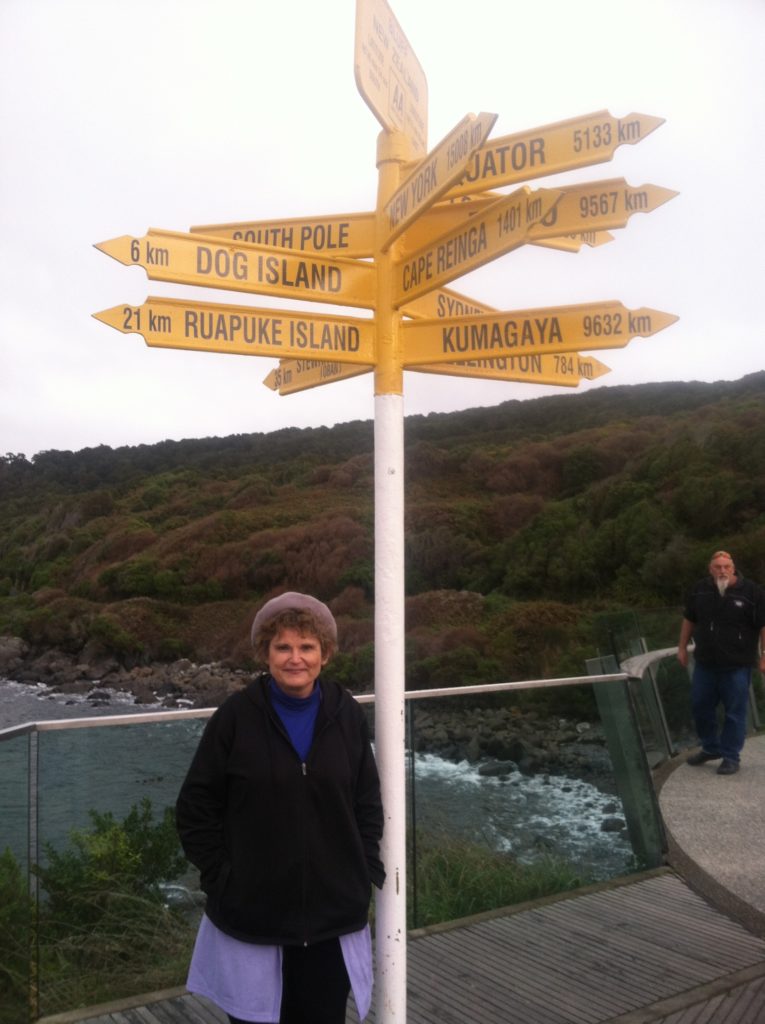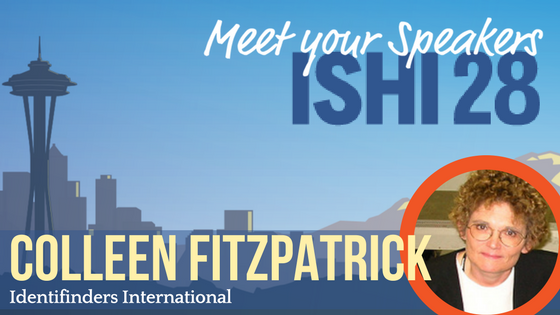The ISHI agenda is live and includes great talks from amazing speakers! While the forensic community is a tight-knit group, we can always get a little closer, right? With that in mind, we interviewed our speakers to preview their presentations and to get to know them a little better outside of their work. We’ve been posting their responses in a feature we like to call Under the Microscope.
Today, we’re chatting with Colleen Fitzpatrick, who will be presenting How Forensic Genealogy Solved the Phoenix Canal Murders during the General Sessions on Wednesday, October 4th.
How did you become involved with the Phoenix Canal Murder case?
Thanks to my attendance at ISHI 2014, I had a chance to meet with the Phoenix Police Department to discuss the use of forensic genealogy towards solving their cold cases. They saw the potential of the new techniques I presented. Several weeks later, they sent me the Y-profile of the perpetrator on the 1991 Canal Murder case, which I compared to the online genetic genealogy Y-STR databases. I returned the results shortly after that, unaware that the information would allow the PD to make an arrest. I was told that the information I provided reduced the number of suspects from about 2,000 to just five. The Phoenix PD was very forward-thinking to use forensic genealogy to solve their case. I am grateful to them for their vote of confidence.
How does your line of work differ from that of a traditional detective?
Traditional detective work involves tracking the whereabouts of an individual through private records, such as through DMV and law enforcement databases. The legal community hopes for a one-to-one CODIS match, or if permitted, a familial match to a close family member. In contrast, I use public genetic genealogy databases in conjunction with historical records to generate leads to a suspect’s identity through his ethnicity, nationality, and family history and geography. A match found in a Y-STR genetic genealogy database cannot identify a specific individual as a suspect– it can only produce a perpetrator’s probable last name. Hopefully this will allow law enforcement to narrow their list of suspects, and ideally use conventional investigative techniques from there to solve the case.
How might law enforcement and the genealogical community work more closely?
Three ways: education, education, education. There is so much misinformation in the genealogy community about the use of DNA by law enforcement. Genealogists routinely provide DNA samples to Direct-to-Consumer (DTC) testing companies for recreational purposes, yet are unconcerned about the terms of use and privacy agreements they must sign that require them to relinquish their rights on how the companies might use their DNA. The only commitment DTC companies give their customers is to do their best to anonymize their data. DTC DNA testing is a largely unregulated industry.
Yet the genealogical community is nervous about law enforcement’s use of the DNA results that genealogists post on public websites. In contrast to the DTC industry, however, law enforcement’s use of DNA is highly regulated, and geared towards protecting an individual’s rights. The police are not agents of Big Brother, free to harvest DNA as they wish for evil purposes. Law enforcement officers are trying to solve crimes to keep us safe. That’s it.
You mention in your abstract that an incredible amount of information about a person can be gleaned by combining forensic genealogy with DNA phenotyping. What do you mean by that?
Thanks to Parabon’s SnapShot, it has become possible to approximate what a suspect looks like based on phenotypic- and ancestry-informative SNPs. Forensic genealogy can complement those results by putting a name with that face.
There are currently ~300k YSTR profiles posted in public databases. Do you see those numbers growing exponentially in the future?
Growing, but not exponentially. Y-DNA testing for genealogy is mature. Although the Y-STR databases are growing, their growth has slowed because of the popularity of more recently developed genetic genealogy tests and services that have appeared on the market.
As it becomes possible to extrapolate more information based on DNA alone, do you think that individuals might be hesitant to submit their samples to a public database?
It doesn’t matter – if you don’t put your DNA in the database, one of your relatives might. For example, the individuals who posted their Y-STR data online that matched the Y-Filer profile on the Canal Murders probably had no knowledge of Brian Patrick Miller although he was evidently their distant cousin.
In the present case, the Y-STR match on the Canal Murders only provided the police with the name Miller as the probable last name of their killer. The police had to check the name against their list of suspects and to further identify Brian Patrick Miller as a person of interest from among the Millers on their list. Mr. Miller was not in the genetic genealogy databases himself. Note that even after the Phoenix PD had identified Mr. Miller as a suspect, they still had to obtain an evidentiary DNA sample from him to compare to the killer’s CODIS profile before making an arrest. A genetic genealogy match was not sufficient.
What tips would you give to someone who is just starting out in the forensics field, or what’s the best advise you’ve ever received?
Sit in on as many cases studies as you can! Learn the ropes! Be fascinated! Get a degree in forensic science. At the same time, educate yourself about the larger issues we face as forensic practitioners. Definitely attend ISHI to meet the experts. Come up to speed on how we are working together to improve forensic methodologies. Learn everything you can. Be well-informed.
How did you become interested in forensics?
Because of my hard science background – PhD in nuclear physics – I have always applied scientific methods to my genealogical research. As I realized that scientific-genealogical methods could enhance forensic identification, I began to develop the new field of forensic genealogy. Since then, I have been called on for high level projects such as identification of The Titanic Baby, the Abraham Lincoln DNA project and the exposure of several international bestselling literary frauds. This has led to my broader involvement with military identifications, missing-identity child survivors of the Holocaust, and cold case work for law enforcement agencies throughout the country. I excel at international work – I have researched in 50 countries.
When you’re not at work, what do you most enjoy doing?
I love to travel and I love foreign languages and foreign cultures. I’ve been to six continents. Last summer I went to Warsaw and Berlin to do Holocaust research in the Polish and German national archives. I had never been to either city before. In August, I am headed to see the total solar eclipse in Oregon. This will be my 7th. I’ve seen six others in Hawaii, the Galapagos Islands, the Atacama Desert in N Chile, Zimbabwe along the Zambesi River, and two in Turkey. I hope to apply my forensic identification techniques to work on international projects. I am comfortable just about anywhere in the world.

For those who are on the fence about registering for the upcoming ISHI, please share your thoughts and reasons why they should attend.
I’ve been to ISHI many times! I love seeing my colleagues and catching up with the latest developments. It’s all in one place – one-stop shopping. Not only does ISHI have excellent talks and plenary sessions, I love the parties and the after-hour seminars when you can mingle informally. In my previous professional life, I was in field of laser measurement techniques. Their conferences and social activities are kind of pale compared to the total blast I have at ISHI.
WOULD YOU LIKE TO SEE MORE ARTICLES LIKE THIS? SUBSCRIBE TO THE ISHI BLOG BELOW!


